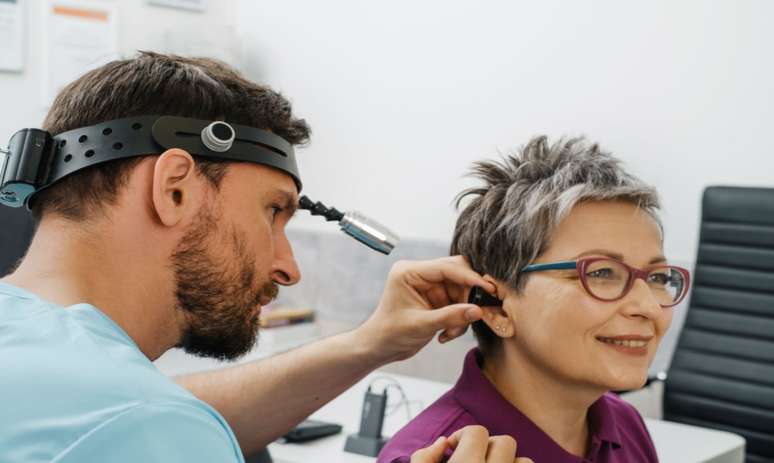Brazilians spend around 16 hours a day awake, but a survey carried out by the Electronics Hub platform, based on the Digital 2023: Global Overview Report survey, by DataReport, concluded that during these hours, around 56.6%, or nine hours of the day are in front of the screen. In the same report, Brazil, among the 45 nations analyzed, […]
Brazilians spend about 16 hours a day awake, according to a survey carried out by the platform Electronics hubbased on research Digital 2023: global overview reportfrom the Data reportconcluded that at these times, approximately 56.6%, or nine hours of the day, are spent in front of the screen. In the same report, Brazil, among the 45 nations analyzed, ranks second in the ranking of the most connected population.
From age to recommended time
In the technological society we live in, children are the most affected by the time spent in front of the screen, considering that many of them come into contact with electronics in the first months of their lives. According to Dr. Fabiano de Abreu Agrela Rodrigues, postdoctoral in Neuroscience, member of the Neuroscience Society in the United States and a member of Royal Biological Society In the UK there is a science-recommended age and time period for using screens.
Recommended viewing time based on age:
The Brazilian Society of Pediatrics (SBP) and the American Academy of Pediatrics (AAP) recommend:
- Up to 2 years: completely avoid the use of screens;
- From 2 to 5 years: limit time spent in front of the screen to one hour a day, favoring high-quality educational content watched with parents;
- Ages 6 to 10: Limit screen time to one to two hours a day, including television, electronic games, computers and cell phones;
- Over 11 years old: Limit screen time to two to three hours a day, focusing on educational and productive activities.
And when we talk about digitalized education?
After the pandemic, when we had no choice but to use the internet to our advantage, education became increasingly digitalized. So, what do you do when kids have classes that require access to tablets and/or computers, but when they get home they want some free time watching television or playing video games? The expert offers some tips:
- Prioritize educational content: use high-quality applications and websites that stimulate learning and creativity;
- Take part in the experience: watch videos and play educational games with your children, taking the opportunity to interact and learn together;
- Establish clear rules: define specific times for the use of screens for educational and recreational purposes;
- Offer alternatives: Encourage physical activity, outdoor play, reading, and other activities that don’t involve screens.
There are risks to using screens!
“The risks arising from uncontrolled exposure to screens are numerous. Sleep problems are the most common, as blue light can interfere with the production of melatonin, the sleep hormone,” explains Agrela.
The other risks are:
- Obesity and sedentary lifestyle: excessive time in front of screens can lead to a decrease in physical activity and an increase in the consumption of high-calorie foods;
- Difficulty with attention and concentration: “constant stimulation from screens can compromise the ability to concentrate and pay attention”, underlines;
- Behavioral problems: excessive use of screens can lead to aggressive, impulsive and antisocial behavior;
- Addiction to screens: excessive use can lead to addiction, making it difficult to control the time spent in front of them.
But there are advantages…
In this case, the advantages come from the technology, not from the time spent in front of the screen in an uncontrolled way: it is always good to remember this. “We have access to information and knowledge; development of skills, through educational games and applications that can stimulate the development of cognitive, motor and social skills. In addition, we also have connectivity with friends and family; entertainment and enjoyment,” describes the specialist .
“Moderate and controlled use of screens can benefit children’s development. However, it is essential to set clear limits and offer alternatives to ensure healthy and balanced development,” he stresses.
Tips for using screens greet
Offered by Dr. Fabiano.
- Create a “Family Screen Plan”: establish specific rules and times for screen use for all family members;
- Establish screen-free zones: Avoid the use of screens in environments such as the bedroom and dining table;
- Set a good example: limit the time you spend in front of the screen and demonstrate healthy habits to your children;
- Talk to your children: open a dialogue about the benefits and risks of using screens and encourage their responsible use;
- Offer alternative activities: Encourage physical activity, outdoor play, reading and other activities that don’t involve screens.
Source: Terra
Ben Stock is a lifestyle journalist and author at Gossipify. He writes about topics such as health, wellness, travel, food and home decor. He provides practical advice and inspiration to improve well-being, keeps readers up to date with latest lifestyle news and trends, known for his engaging writing style, in-depth analysis and unique perspectives.



-1iyq160aoa4ag.png)


![Everything starts here: What awaits you on Thursday of September 18, 2025 in the 1266 episode [SPOILERS] Everything starts here: What awaits you on Thursday of September 18, 2025 in the 1266 episode [SPOILERS]](https://fr.web.img3.acsta.net/img/44/34/4434fec4599e79e4c76ca28c3f25362a.jpg)


